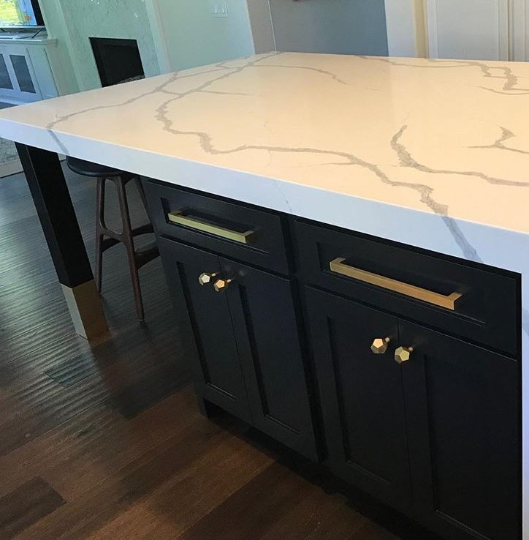Count On Professional Workmanship for Tailored Legs For Kitchen Island Concepts
Vital Elements to Think About When Selecting Legs For Kitchen Island
Picking the suitable legs for a cooking area island includes a mindful assessment of several factors that can substantially affect both performance and visual appeal. As we check out these components, it becomes clear that each decision can have far-ranging implications for the general cooking area experience.
Material Options
When selecting legs for a kitchen area island, recognizing the various material alternatives is essential for accomplishing both visual allure and structural stability (Legs For Kitchen Island). The option of product significantly influences not only the longevity of the island but also its general style and capability
Metal legs, typically made from stainless steel or wrought iron, contribute a industrial and modern-day feeling while making certain longevity and security. These products are resistant to wear and can support substantial weight, making them ideal for bigger islands.
An additional choice is engineered materials, like MDF or plywood, which can be much more affordable while still offering a series of coatings. However, they may not offer the same level of security as strong wood or steel. Lastly, materials such as acrylic or glass can develop a modern look, though they might call for added assistance to make certain stability.
Inevitably, the choice of product for kitchen island legs need to line up with the wanted performance and the general motif of the kitchen area.
Style and Layout

When considering style, the shape and coating of the legs are critical. Tapered legs can provide a sense of agility and elegance, while thicker, more durable legs can share toughness and security. In addition, the surface-- be it painted, stained, or natural-- should complement the kitchen cabinetry and kitchen counter products to produce a unified look.
Furthermore, the design of the legs can also mirror individual taste. Customized or decorative legs, such as those including complex carvings or distinct geometric shapes, can function as focal factors, including personality and individuality to the kitchen. Inevitably, the appropriate option will not just improve performance but additionally raise the aesthetic allure, making the kitchen area island a standout feature of the home.
Elevation Considerations
Choosing the ideal height for kitchen island legs is critical, as it straight impacts both capability and comfort. The conventional height for a cooking area island generally varies from 36 to 42 inches, lining up with usual countertop heights. A 36-inch height is ideal for food prep work and food preparation, permitting for comfortable use kitchen devices and tools. Alternatively, a height of 42 inches is usually chosen for islands planned for bar seating, suiting taller stools and using a casual dining experience.

It is likewise necessary to account for customers' my review here choices and heights. Tailoring the height can make certain a comfy experience for all member of the family, making the kitchen island an extra pleasurable and functional room.
Weight Support
Making certain ample weight support for cooking area island legs is crucial for both safety and performance. The kitchen island commonly serves several purposes, including cooking, dining, and extra storage space, requiring a durable support structure. When picking legs, it is essential to take into consideration the overall weight capability called for based on the island's meant use and the materials that will be put on it.
The option of material for the legs plays a significant duty in their weight-bearing capabilities. Solid timber, metal, and durable compounds usually offer exceptional stamina compared to lighter products. In addition, the design of the legs-- whether they are straight, tapered, or have a pedestal form-- can influence their capability to disperse weight effectively across the structure.
In addition, the leg positioning should be tactically prepared to boost Continued security. Legs placed at the edges or with a wider base can better support much heavier tons. Constantly get in touch with the manufacturer's specifications concerning tons limitations to make sure that the legs can maintain the designated weight without endangering safety and security. In recap, picking cooking area island legs with ample weight assistance is crucial for developing a secure and useful cooking area.
Installment and Maintenance
Proper setup and maintenance of kitchen area island legs are crucial for making certain longevity and security. This typically involves protecting the legs to the island base using proper bolts, guaranteeing that the legs are degree and aligned.
When installed, routine upkeep is necessary to protect the honesty and appearance of the legs - Legs For Kitchen Island. For wood legs, routine cleaning with a moist towel and application of appropriate wood gloss can protect against moisture damages and keep their finish. Metal legs might call for a gentle cleaning option to get rid of grease and grime, complied with by a completely dry cloth to stop corrosion development
Furthermore, check the legs regularly for signs of wear or damage, such as cracks or loose joints. Tightening up screws or screws as needed can likewise extend the life expectancy of the legs. By sticking to these installation and maintenance practices, property owners can ensure that their kitchen area island remains durable and visually appealing for years to come.
Final Thought

Aesthetic coherence is critical in choosing the design and layout of legs for a cooking area island, as these elements significantly influence the general atmosphere of the area. Conical legs can give a feeling of agility and style, while thicker, more robust legs websites can convey strength and stability.Choosing the appropriate height for kitchen island legs is essential, as it directly impacts both functionality and comfort. In summary, selecting kitchen island legs with adequate weight assistance is essential for creating a secure and useful cooking area.
In conclusion, selecting legs for a kitchen island demands mindful factor to consider of different elements, including product alternatives, design, height, weight support, and installment.